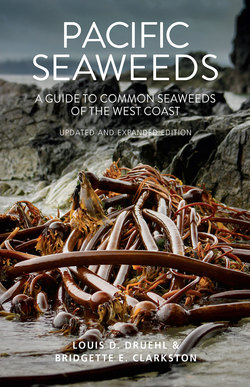Читать книгу Pacific Seaweeds - Louis Druehl - Страница 29
На сайте Литреса книга снята с продажи.
Оглавление29
About Seaweeds
richness of our marine heritage. A curious phenomenon arises from the use of DNA identifications. As you will discover in the species descriptions, often what was thought to be a single species, as defined morphologically, was discovered to be composed of many molecular species. In some instances, these molecular species have not been described morphologically and, often, when their morphologies have been compared, no distinguishing features have been noted. These are cryptic species … and very frustrating to the field biologist.
The initial and ongoing application of the DNA barcode was to describe and catalogue our biodiversity. As the library grows, new and powerful applications are emerging, such as revealing mislabelled food, herbs and other products. In one scandalous example, endangered fin, sei and minke whales were discovered being served as sashimi at several restaurants in California and Korea. Other endangered animals and plants have been tracked, including products such as “bushmeat,” meat from wild animals, especially in Africa and Asia, which can carry human diseases. Border agencies have used barcoding to document invasive species and crop pests in agricultural products. Steve Fain, who pioneered kelp DNA phylogenetics while at Simon Fraser University, now works for the US Fish and Wildlife Service. He uses forensic DNA studies to catch traffickers. For example, he has discovered mislabelled caviars from endangered species.
Paul Hebert envisions a not-too-distant day when barcoding can be done with a handheld device (think Tricorder from Star Trek). Until then, and maybe beyond, beachcombers and botanists, school groups and scientists alike will still use field guides and taxonomic keys to explore their world. So look sharp! And look closely. You never know when something new has crossed your path.
Beach Etiquette, Collections, Safety
As you stand on the shore, enjoying the splendour around you, consider the myriad plants and animals gasping under your boots. Anyone who ventures into the intertidal region has an adverse impact on its inhabitants, but we can minimize this impact. If you turn a rock to see what is under it, roll it back into its original position. Collect specimens only when you must. The seaweeds described in this guide can be identified in the field without being disturbed. British Columbia and all western US states have regulations governing the collection of seaweeds; become aware of these. The Nutrition and Cooking
